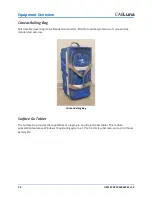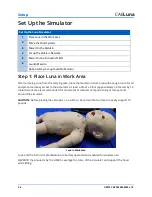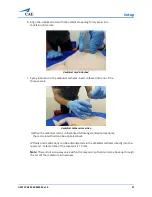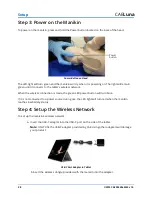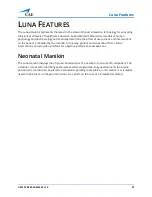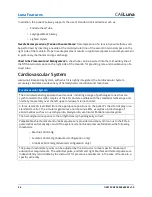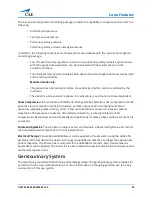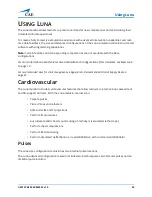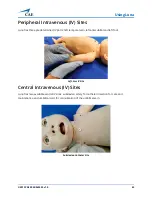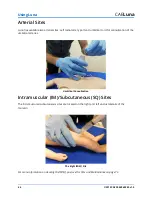
Luna Features
34
©2019 CAE 905K560252 v1.0
CAE
Luna
In addition, the patient’s airway supports the use of standard clinical devices such as:
• Endotracheal Tube
• Laryngeal Mask Airway
• Lighted Stylets
Needle Decompression of Tension Pneumothorax
:
Decompression of a tension pneumothorax can
be performed by inserting a needle at the mid-clavicular line of the second intercostal space on the
right side of the manikin. Proper needle placement results in rapid decompression and improvement
in pulmonary mechanics and gas exchange.
Chest Tube Placement and Management
:
A chest tube can be inserted into the mid-axillary line of
the fifth intercostal space on the right side of the manikin for practicing care and maintenance of a
chest tube.
Cardiovascular System
Like Luna’s Respiratory System, with which it is tightly integrated, the Cardiovascular System
accurately simulates a wide variety of hemodynamic conditions and responses.
Cardiovascular System
The simulated patient generates heart sounds, including a range of pathological ones that are
synchronized to the QRS complex of the ECG and are audible with the standard stethoscope and
StethoSym assembly over the left upper and lower sternal border.
A three-lead ECG is emitted from the appropriate positions on the patient’s chest for display on a
standard monitor. The simulator generates a normal sinus ECG, as well as a broad range of
abnormalities such as sinus tachycardia, bradycardia, ventricular fibrillation and asystole
The hemodynamic response to the arrhythmias is physiologically correct.
Palpable brachial, femoral and umbilical pulses are provided and are synchronous to the ECG. A
pulse deficit automatically occurs if the systolic arterial blood pressure falls below the following
thresholds:
• Brachial: 40 mmHg
• Femoral: 40 mmHg (Advanced configuration only)
• Umbilical: 40 mmHg (Advanced configuration only)
The pulse threshold set points can be adjusted by the instructor to meet specific clinical and
educational requirements. The umbilical pulse, and left and right brachial and femoral pulses are
independently controllable by the instructor for presence and absence in the case of trauma to a
specific extremity.

